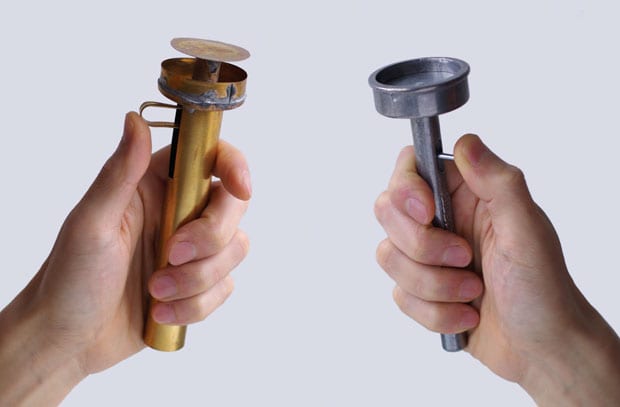
words Sam Hecht and Kim Colin
We asked designers Sam Hecht and Kim Colin – Industrial Facility – to delve into their collection of cheap things. In the first of the series, they compare falafel scoops from Palestine and Israel.
Cooking utensils feature heavily in our Under a Fiver collection, probably because they are tied to local markets with specific needs and have no room for silliness.
In this example, two falafel makers, one Palestinian, the other Israeli, are each produced no more than a few miles apart. Without trivialising the difficulties in the region, one of the main purposes of Under a Fiver is to reveal cultural differences in how we consume.
Anyone who’s tried to make falafel – a fried ball made of chickpeas and fava beans – with their hands knows that, in an effort to make the simple round balls, the mix has a habit of sticking to the skin. A falafel maker reduces mess and allows quick and easy chickpea patties to be made.
With the Israeli tool, made of cast zinc alloy, a spring action lever is pulled down by the thumb to allow the uncooked falafel mix to be pushed in. The lever is then released over hot oil with the spring action pushing the falafel into the fryer. There’s speed and efficiency in this method, and the simplicity and diagrammatic aesthetic help make it a real success.
Even though the Palestinian model is completely handmade using braised brass, in terms of form and action the two models are exactly the same. No improvements, no alterations. So it’s interesting to ask which came first: the manufactured or the handmade model?
In terms of simplicity, the Palestinian one can do exactly what the Israeli one can with fewer than half the number of parts – due, no doubt, to more limited means.
It was Alex Ward, Curator of Design and Architecture at the Israel Museum, who alerted us to these time-saving tools, and for that we are grateful.
www.industrialfacility.co.uk
















